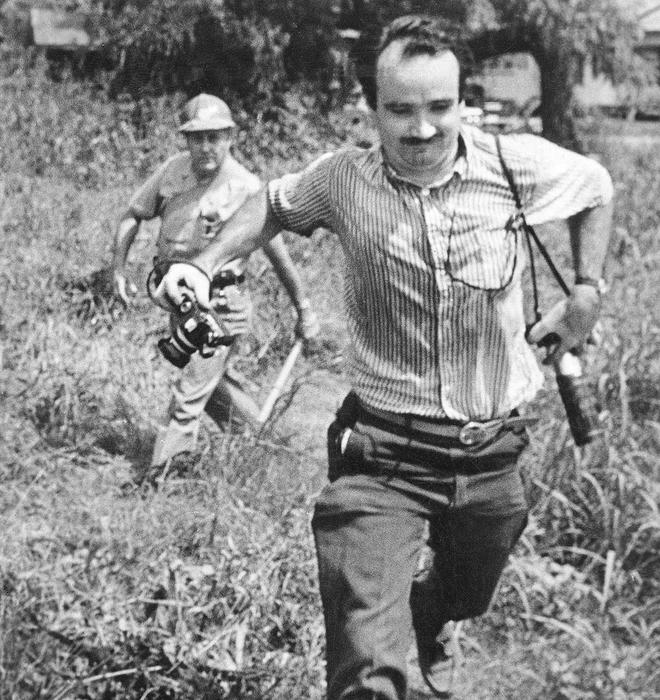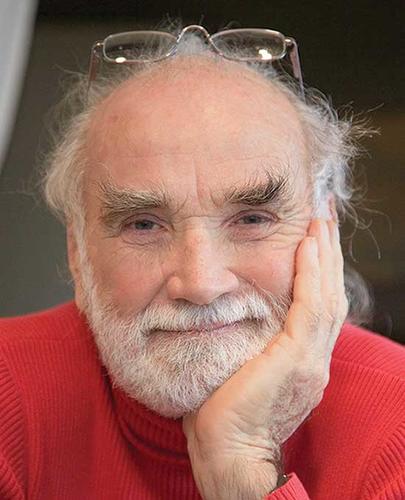
Aug. 3, 1931 – Aug. 7, 2020
Those who knew Matt Herron ’53 greeted his death in August, when the glider he was piloting crashed, as sad, but reflective of the man. He was not just a journalist and an activist, but an adventurer with a host of passions: photography, civil rights, environmentalism, playing the double bass, sailing and, of course, soaring.
“He died as he lived,” says Katy Butler, a longtime friend. “He always took risks.”
Herron’s photojournalism career was made by one big risk: In the summer of 1963, he, his wife, and two children left Philadelphia for Birmingham, Alabama. Two weeks later, he was one of the first photographers at the 16th Street Baptist Church after a bomb placed there killed four girls. His shots ran in Life magazine.
Determined to document Southern culture, Herron raised $10,000, recruited eight photographers, and launched the Southern Documentary Project in 1964, as 1,000 college students went to Mississippi to register Black voters. His team fanned out, shooting iconic images of “Freedom Summer.”
While Herron recorded the “big moments” of the civil rights era, notes Ken Light, a professor at UC Berkeley Graduate School of Journalism, he also captured the smaller, telling scenes of life in the South. “He wasn’t a photographer who just helicoptered in,” Light says.
Herron went to college eyeing a diplomatic career. But at Princeton, he was moved by sculpture and art-history classes — and by returning World War II veterans. Becoming a conscientious objector, he taught at a Quaker school in Ramallah, bought a camera in Jerusalem, and, as he said wryly, “schlepped cameras when photojournalists came through.”
He met his wife, Jeannine Hull, when she visited the school; also an activist, Jeannine worked for the Student Nonviolent Coordinating Committee (SNCC) while Herron ran his documentary project from a hamlet in the Mississippi Delta.
In the 1970s, in a course change, Herron wrote a book about a two-year family sailing trip to Africa. He joined Greenpeace anti-whaling voyages and wrote about them. Later he ran a photography agency.
He went back to skiing at 50 (having started a ski team at Princeton) and launched a welding company. When he turned 70, he learned to fly. When he was 80, his wife gave him a standup bass; eventually, he played with small orchestras. “I get caught by enthusiasms,” he said.
In 2014, Herron published the elegant book Mississippi Eyes; its images were featured in a solo exhibition at the San Francisco Main Library last spring. At the opening, Herron described his mother, who died at 107. After a life as a weaver, a tapestry designer, a knitter, a spinner, and a teacher, he said, “when she began to lose the ability to do certain things, she took up others.”
“He had great plans to outlive her,” Jeannine said. “He loved to teach himself — and to master things.”
Herron’s last work of journalism was a series of articles for Soaring magazine on falling in love with his new Lithuanian glider. On Aug. 7, he was piloting the craft on a 50-mile trip from Lakeport to Mendocino when it crashed.
Constance Hale ’79 is a California journalist and author.
Watch local CBS news coverage of Matt Herron’s exhibit, “I'm Walking For My Freedom,” in San Francisco, February 2020.







No responses yet